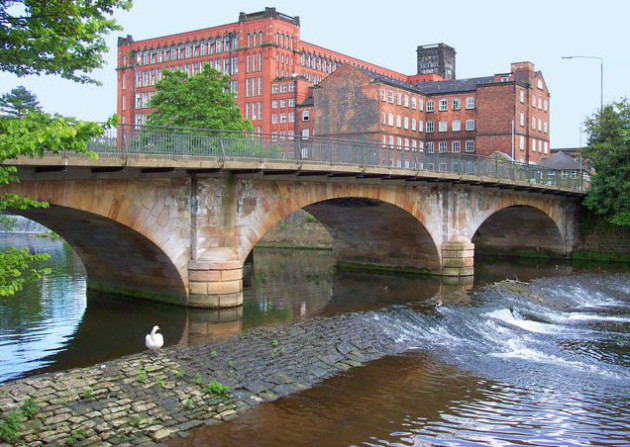Derwent Valley Mills
Vicky Sartain
In the late 18th century Richard Arkwright’s Cromford Mill successfully harnessed water for textile production and created the blueprint for what we know today as the modern factory system. Arkwright’s mill was copied throughout the Derwent Valley, and later spread across the country. By 1788 there were over 200 similar mills in Britain. Arkwright’s inventions and systems were soon exported to Europe and America too.
The Derwent was one of the birthplaces of the Industrial Revolution. New settlements were built by mill owners around their mills – often with their own amenities such as schools, chapels, and markets. Most of the housing is still in use and can be seen by today’s visitors.
There’s plenty to see: the Derwent Valley Mills World Heritage Site covers a 15-mile stretch from Matlock Bath to the centre of Derby. Within the site are mill complexes, workers’ housing at sites like Cromford, Belper, Milford, and Darley Abbey, weirs on the river, and the transport network that supported the mills. The site includes 838 listed buildings and nine Scheduled Ancient Monuments. The Cromford Canal and Cromford and High Peak Railway are also part of the World Heritage Site. Many of the mills are well preserved and are open to the public as fascinating glimpses into the birth of the Industrial Revolution.
Arkwright’s original Masson Mill is now a working textile museum and includes the largest collection of bobbins in the world. The Derwent Visitor Centre is housed in the old Belper North Mill and includes displays of machinery. Other attractions include canal pumphouses, factory shops, textile demonstrations and even Arkwright’s luxurious ‘castle’ home.
Tel: 01629 536 831. www.derwentvalleymills.org




